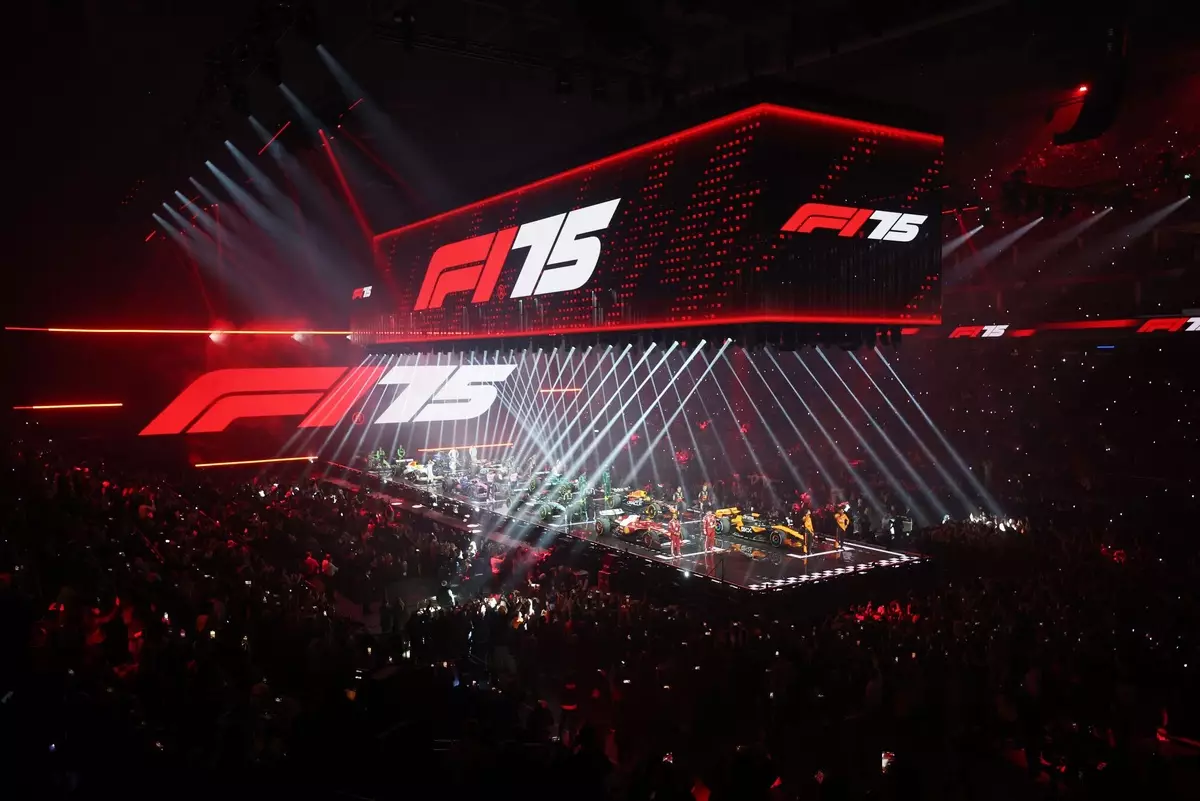The recent F175 livery launch event held at London’s O2 Arena has sparked a multitude of reactions, leaving fans and critics alike reflecting on its impact on Formula 1’s public image. An event that was equal parts celebration and showmanship, it successfully showcased F1’s shift towards engaging a broader audience—an initiative that may diverge from traditionalist sentiments but captures the adventurous spirit of the sport. Comedian Jack Whitehall’s remark about hearing “the purists groaning” encapsulated the duality of responses, illustrating a clear divide between those who cherish the sanctity of motorsport and a younger audience craving excitement and engagement.
As Formula 1 continues to grow in popularity, it finds itself at a crossroads. The extravagant nature of the event, with significant financial investments—Red Bull reportedly spent around £800,000—has raised eyebrows among teams. Critics argue that such spending could be better allocated; however, the experience produced at the O2 Arena transcended mere fiscal considerations. This was a calculated leap into the future, aimed at showcasing F1’s flair and pizzazz to attendees who may not have traditionally checked the F1 calendar.
The event was not devoid of spectacle, and yet it was the controversial reactions that drew the most attention. The crowd’s passionate booing of figures like Christian Horner and Max Verstappen contrasted starkly with the roaring applause reserved for Lewis Hamilton. The latter’s transition to Ferrari was a major talking point, leading to a spectacle reminiscent of a theatrical performance rather than a straightforward sports event. It’s a telling sign that the personalities involved carry significant weight in the public psyche, evidenced by the feverish reactions directed towards them, whether they were adulations or disdain.
Horner, faced with a chorus of jeers, displayed an uncanny ability to absorb the crowd’s reactions while maintaining his composure. This moment served as a reflection of the changing nature of F1’s narrative, largely shaped by popular culture, such as the Netflix series “Drive to Survive.” In a way, Horner has become a controversial figure, akin to a hero in a quest narrative; the adoration and vilification he receives symbolize the complex relationship audiences have with modern-day racing figures. It’s a dynamic that makes the launch event resonate more deeply, evoking emotions that establish deeper connections with fans.
The true aim of the F175 launch was not solely to present new machinery but to forge connections with a demographic that may see F1 as an inaccessible and niche sport. By placing F1 in a vibrant urban atmosphere, the series takes a calculated risk to reach out to fans who might not attend races. Each comedic quip from Whitehall, as he engaged Max Verstappen with lighthearted humor, served to humanize the drivers, an often overlooked aspect of this high-octane sport.
Yet, the event was not without shortcomings. While the reflective tributes to each team brought a sense of nostalgia, the overlays of entertainment sometimes overshadowed the technical expertise that teams usually showcase. There was an evident absence of deeper context concerning the workings of Formula 2, Formula 3, or the newly established F1 Academy. This missed opportunity was a minor blemish contrasting the otherwise entertaining presentations that spanned the evening.
Moreover, enthusiasts missed the sensory thrill often provided by a roaring engine. Sound is an unforgettable component of motorsport, and while that absence might not deter new fans, it highlights a disconnect between traditional and modern approaches toward racing engagement. Formula 1’s attempts to innovate should strive to balance entertainment and the essential heritage of motorsports, ensuring that both old and new viewers feel catered to.
Despite the criticisms, one cannot ignore the overall success of the F175 livery launch. For F1 to evolve, it must take risks, often stepping outside the conventional bounds of a car launch to cultivate an atmosphere of celebration. The event appeared to hit the mark, appealing to a new, younger audience that yearns for authenticity and connection in sports. The dynamic and interactive essence of the evening was not merely about showcasing vehicles; it was an exploration of what motorsport could become in the future.
Ultimately, the launch’s legacy may lie not just in the cars but in its potential to redefine how the sport connects with its audience. The F1 community may always have factions of purists, but as the sport strides toward broader horizons, it seems increasingly inviting—a thrilling spectacle that encourages everyone to embrace the excitement that Formula 1 has to offer. This evolution is a victory for inclusivity in racing and a step towards the sport’s vibrant future.


Leave a Reply